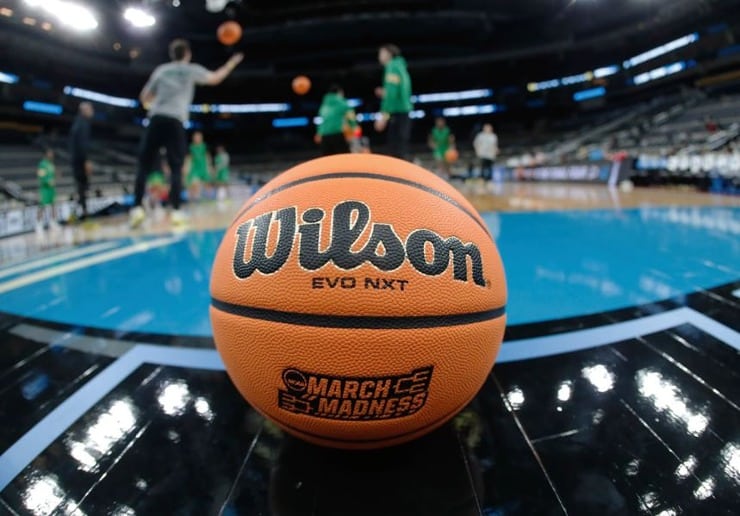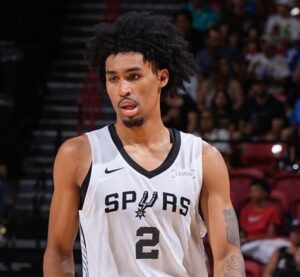The NCAA has partnered with Signify Group to investigate online harassment of college student-athletes, and the organization released its first online harassment study on Thursday.
NCAA partnered with Signify Group using its Threat Matrix service powered by artificial intelligence
The NCAA released the complete summary analysis from the Division I championships pilot study, which monitored public comments targeting the online profiles of student-athletes, coaches, and officials participating in seven NCAA championships and the College Football Playoff National Championship.
Signify Group’s analysts reviewed more than 72,000 messages that were flagged by their AI-based algorithm from a wider dataset. About 1.3 million posts/comments were targeted at the social media profiles of student-athletes, coaches, and officials participating in the events.
From the messages analyzed, the team verified over 5,000 posts containing abusive, discriminatory, or threatening content. These messages have been reported to social media platforms for action.
NCAA study revealed seven main points:
- 18% of all abuse was sexual, making it the most common type of abuse used to target male and female student-athletes.
- 12% of all abuse was related to sports betting, with more than 740 instances. As betting markets increased, so did the prevalence of harassment, with 19% rates in men’s basketball and football. Some abuse flagged in other categories indicated that the posts were betting-related.
- 10% of abuse consisted of racist content.
- 9% of abuse was homophobic/transphobic.
- 6% of abuse, approximately 380 instances, was violent.
- 80% of the abuse in the study was directed at March Madness student-athletes.
- Women’s basketball student-athletes received approximately three times more threats than men’s basketball student-athletes.
“I’ve heard too many student-athletes talk about abusive messages they have received. … For the first time ever, we now have evidence of the scale at which this is occurring. It’s incredibly alarming and completely unacceptable,” NCAA President Charlie Baker said.
“Fans have to do better, social media companies have to do more to identify and remove this content. … We all need reminders about responsible social media usage. Student-athletes come to college hoping to fulfill their athletic and academic dreams. … Our job at the NCAA is to provide them with the most fulfilling experience possible. We will exhaust all options to reduce the harassment and vitriol student-athletes are experiencing too often today.”
Over 540 abusive betting-related messages were directed at men’s and women’s basketball student-athletes and game officials
In December, the NCAA announced that it engaged Signify Group to provide its Threat Matrix service to support the Association in studying and responding to online abuse and threats directed at NCAA championship participants, including student-athletes, coaches, officials, and committee members.
This initiative was established to promote the mental health and well-being of the college sports community. The Threat Matrix services functions via data collection, analytics, and action.
In May, a preliminary set of data trends was released, detailing some of the abuse observed during March Madness. The set of data trends was studied across the Division I Men’s and Women’s Basketball Championships.
More importantly, over 540 abusive betting-related messages were directed at men’s and women’s basketball student-athletes and game officials. A number of posts were death threats.
“College athletics ignites passion and creates enthusiastic fan bases that cheer on our student-athletes,” Duke Vice President and Director of Athletics Nina King said. “We welcome the positive support and dedication but will not tolerate any form of abuse that threatens student-athlete mental health and well-being.
“There is absolutely no place for harassment or discrimination of any kind in college sports. We are committed to protecting student-athletes who should be celebrated for their academic and athletic achievements in a safe environment, free from online abuse and harm.”
Signify Group monitored women’s volleyball, softball, gymnastics, baseball, and College Football Playoff National Championship
In addition to Division I Men’s and Women’s Basketball Championships, Signify Group monitored other championships in the division: women’s volleyball, Football Championship Subdivision football, softball and baseball. The study also included the National Collegiate Women’s Gymnastics Championships and the College Football Playoff National Championship.
Overall, the study monitored the accounts of 3,164 student-athletes, 489 coaches, 197 game officials, 165 teams, and 12 NCAA official channels. This resulted in findings of 16 categories of online abuse and threats across all championships.
“This initiative has been a fascinating learning exercise,” said Jonathan Hirshler, CEO of Signify Group. “Our Threat Matrix service is used across global sports, covering some of the highest profile athletes on the planet. Our analysts were therefore astounded to see student-athletes receiving volumes of targeted abuse.
“This data underpins the NCAA’s admirable work in this area as these student-athletes (together with coaches and officials) clearly require support.”
Men’s and Women’s March Madness participants received the most abuse
Men’s and Women’s March Madness participants (student-athletes, coaches and officials) received the most abuse. According to the study, 80% of the nearly 4,000 verified abusive messages were posted during the tournaments.
Additionally, the National Collegiate Women’s Gymnastics Championships saw 92% of flagged sexual messages sent from bot accounts that encouraged online users to access sexual content.
Signify Group reported this activity to the social platform, which then suspended the bot accounts. The inappropriate comments were removed from the team and student-athlete gymnasts’ channels.
Moreover, bots were not the only accounts issuing sexual content and abuse. Homophobia and transphobia were consistent issues across championships, ranging from 4.33% in baseball to 22% in women’s volleyball.
“Online abuse of student-athletes is a significant issue that negatively impacts the experience of young athletes across sport, including intercollegiate athletics,” Division I Student-Athlete Advisory Committee Vice Chair Meredith Page said.
“The DI SAAC calls on those in a position of influence to take active steps in providing better protections for our young adults.”
Most instances of racial abuse occurred during March Madness in both men’s and women’s tournaments
Racism was another prominent category of abuse (10%). Every championship in the study, with the exception of FCS football, observed online racist abuse and threats. The most instances of racial abuse occurred during March Madness in both the men’s and women’s tournaments.
Furthermore, 12% of the abuse detected was connected to sports betting based on the context of the language used within the posts. However, the analysis suggests that much of the abuse was influenced by sports-betting behaviors.
The NCAA recently implemented a series of reforms that deliver increased benefits, including expanded mental health support, to student-athletes. As of Aug. 1, all schools with Division I sports programs must provide mental health counseling and mental health services consistent with the NCAA’s Mental Health Best Practices.
Of course, the NCAA is also advocating for social media platforms to identify and remove abusive content directed at student-athletes.
“This groundbreaking study will assist the Association to analyze and assess risks to devise effective solutions and guardrails to protect student-athletes from abusive threats and harms,” said Clint Hangebrauck, NCAA managing director of enterprise risk management.
“The NCAA will continue to work with Signify, campus leaders, social platforms, law enforcement, betting operators and government officials to combat this horrific behavior and drive change for college sports and society.”
The full 20-page report can be read here.







